Your essential guide to understanding everything there is to know about Saffron, the Mediterranean spice that adds a golden hue and floral notes to your favorite dishes. What is saffron? What does saffron taste like? How do you use saffron? And why is saffron so expensive? You have questions; we have answers!
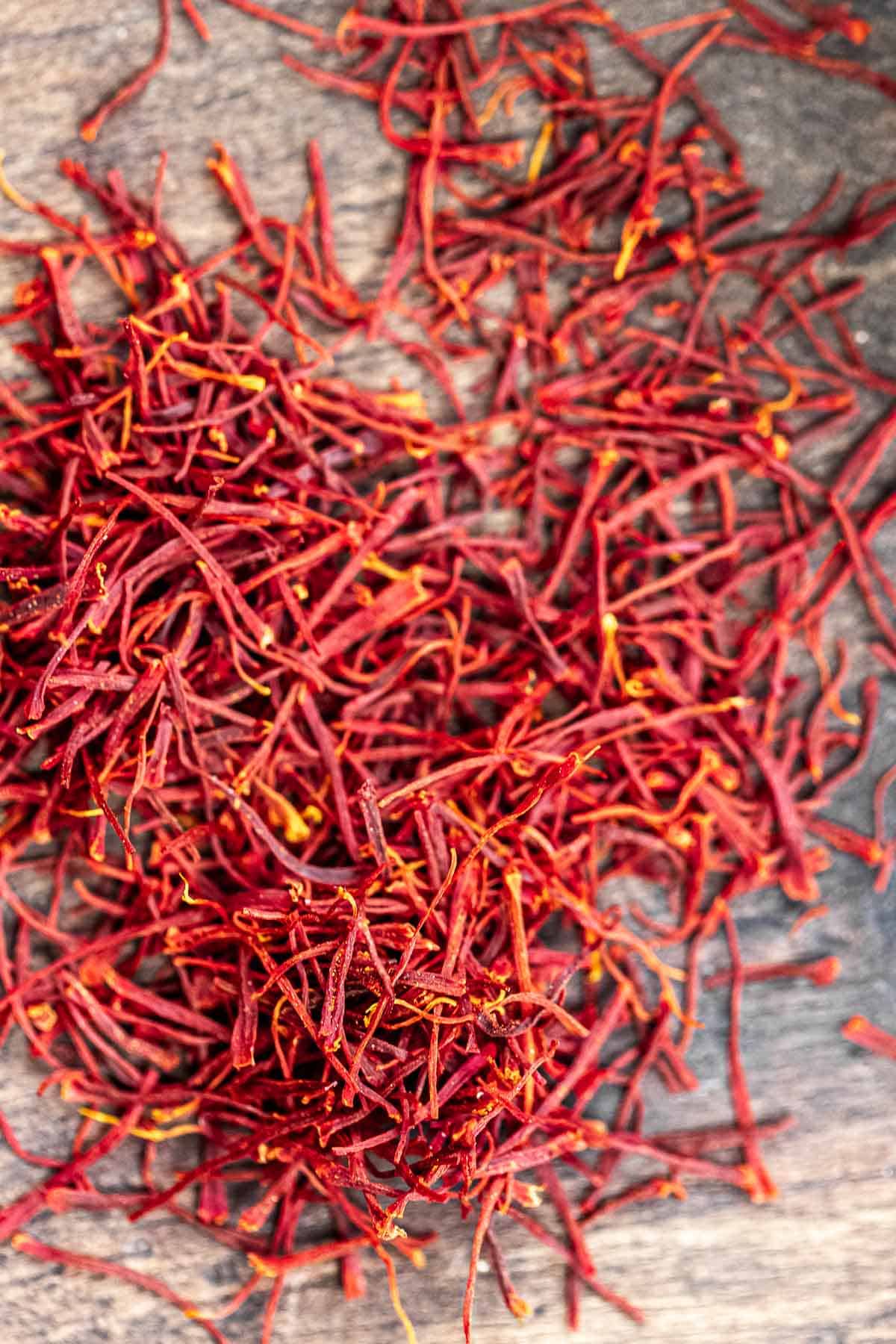
Saffron is used in cuisines from across the Mediterranean, the Middle East and Asia. You can find it in modern recipes like this Whole Roasted Cauliflower, in traditional Persian recipes like Fesenjan or Spanish Paella, among others.
With a spice that’s hard to find and costly (it’s considered the most expensive spice in the world), you should know how to get the most out of your investment.
Thankfully a little goes a long way, so that jar of tiny red threads should last you a while. And, this guide will help you learn how to buy it; how to use it; and how to store this luxurious spice.
Table of Contents
What is Saffron?
Saffron is a spice obtained by drying out the stigmas from the Crocus Sativus flower, also called the “Saffron Crocus,” which is a perennial plant. Its flowering period occurs over the course of three weeks between October and November, after which it is intensely harvested.
The stigmas look like tiny bright, red threads. They’re used to add both flavor and a golden-hued color to dishes. The stigmas are sold by weight usually in 1, 5, or 10-gram sizes.
This spice is synonymous with Persian cuisine, which is not surprising as many believe it originated in Iran. However, Mesopotamia and Greece have also been suggested as possible places of origin. Today, Iran remains the biggest producer and exporter of saffron in the world, although there are emerging markets in many other countries including the U.S.
This delicate spice is used across a variety of cuisines and dishes, from paella in Spain to Risotto alla Milanese in Italy, to traditional recipes in Morocco like Chermoula, India and beyond.
In Persian cuisines it’s very recognizable in rice dishes like Tahdig or the aptly named Saffron Rice, among others. You can even find this floral spice used in teas like the Saffron Green Tea we carry in our shop.

What Does Saffron Taste Like?
Saffron has an earthy taste with subtle floral and fruity notes. Only small amounts are needed to provide both flavor and color. Otherwise, the powerful spice will overwhelm a dish and result in a bitter taste.
You can try to emulate the spice’s amber-yellow dye by using a pinch of turmeric or paprika. But, you cannot substitute its flavor. If a recipe calls for saffron, it’s usually the main flavor component of the dish. It’s worth buying the spice rather than trying to substitute it.
Why is Saffron Expensive?
Saffron is expensive due to a low crop yield and labor-intensive harvesting methods. The stigmas (threads) require hand harvesting due to their delicate nature, and each flower only produces three stigmas per harvest.
The threads must be plucked shortly after the flowers have bloomed or they wilt and become unusable. Growers will work 19-hour days to harvest the stigmas during this short window. It takes 75,000 flowers yielding 225,000 stigmas to create a single pound of saffron!
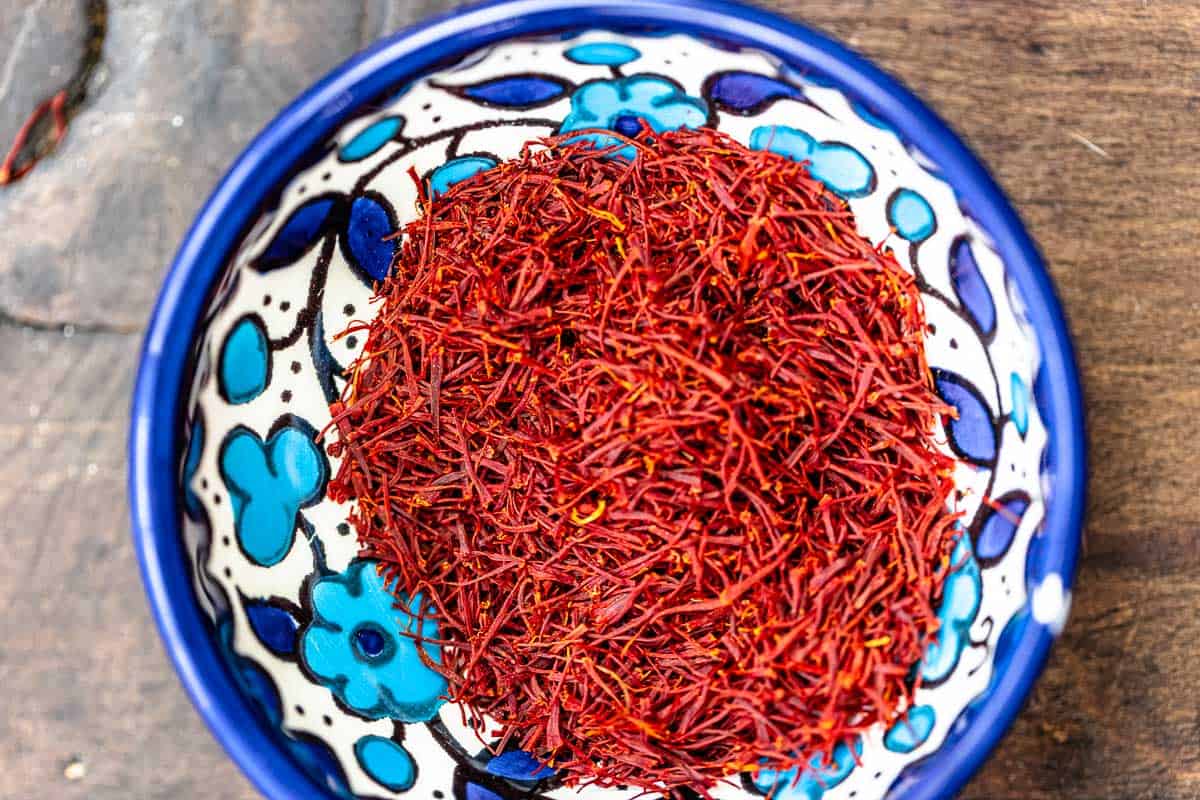
A Note About Quality
Not all saffron is equal! The high cost of the spice has attracted fraudsters seeking to sell imitations, impure or low-quality threads at high prices. To protect consumers, there are gradings and categorizations.
The International Organization for Standardization (the “ISO”) has a laboratory-based grading system by reference to the spice’s flavor, color, and aroma. I recommend opting for Sargol or Coupé-classified saffron. They’re a very high quality at a more reasonable price point. If you live in the US, go for Moroccan or a high-quality Spanish varietal like Coupé. Iranian saffron is not available in the States.
In addition to ISO standards, there are grading systems set by individual countries that indicate quality.
- Saffron produced in Iran accounts for 90% of global saffron production.
- Spain is a competitor in the market, even though it only accounts for less than 5% of total global production.
Both Iran and Spain have grading systems for the spice based on the amounts of red stigmas and yellow styles contained from their harvests.
Quick Buying Guide
Trying to decipher between grades and different classification systems can be overwhelming. Here are some quick tips for how to buy the best saffron.
- Buy from a reputable distributor like The Mediterranean Dish Shop or a Middle Eastern grocery store.
- Always buy strands, rather than pre-ground versions. It’s easier to inspect the integrity of whole threads. Look for red stigma tips with no orange or yellow strands, flecks, or styles.
- Always check the country of origin. Iran and Spain produce excellent saffron. It’s also easier to determine their quality before buying, as there is more information available through their grading and ISO standing. Morocco is also a quality producer.
- If you’re buying from a spice market, check the strands for a deep, vivid red color. Smell for a strong aroma, and test it by ensuring the color and the fragrance retain their vibrancy when bloomed.

Where to Buy Saffron?
Saffron is now available in major supermarkets but it may not be the highest quality. Go for Middle Eastern supermarkets as they’re more likely to stock higher-quality saffron. You can also buy it online, from our shop where we sell both Saffron and Saffron Tea.
While Negin and La Mancha boast the highest grades, their flavor does not, in my view, justify their price point. I recommend Sargol and Coupé which are both excellent quality saffron.
How to Use Saffron
Saffron is usually sold in thin strands which have been plucked from the crocus flower and then dried. Using saffron strands, though, is wasteful and does not get the best out of the spice. Make the most of your saffron, capturing the maximum flavor and color, with a two-step process:
- Grind the saffron: Use either a pestle and mortar or a spice grinder. If you use a pestle and mortar, have patience. Grind until all of the strands become a fine powder.
- Bloom the ground saffron in water: Stir 1/8 teaspoon of the ground saffron with 3 tablespoons of water. Allow to bloom for 10 minutes.
How to Store Saffron
Keep saffron in an airtight container. Store in a cool, dry and dark place such as your pantry or spice cupboard. Saffron, like other spices, does not spoil. Rather, it loses its flavor and vibrancy in color within 6 months if not stored properly. Properly stored saffron can last up to 2 years.
Dishes Where this Spice Shines
In my home country of Iran, saffron infuses khoresh (stews) like Fesenjan or skillet dishes like Saffron Chicken with carrots and leeks, kababs (kebabs), rice dishes like Tahdig, and more.
It even flavors desserts like Bastani Soltani, a saffron and rose water ice cream with pistachios. Sholeh Zard, a rice pudding with a rich and complex flavor profile, is another delicious sweet saffron dish.
In other parts of the world, saffron is used to infuse the classic Spanish dish paella with flavor and color. Whereas, in the Lombardy region of northern Italy, Risotto alla Milanese is a classic dish made with saffron resulting in a golden and rich-tasting risotto. You can also use it to make fusion recipes like this Spanish-inspired stew made with mussels, chorizo, and saffron.
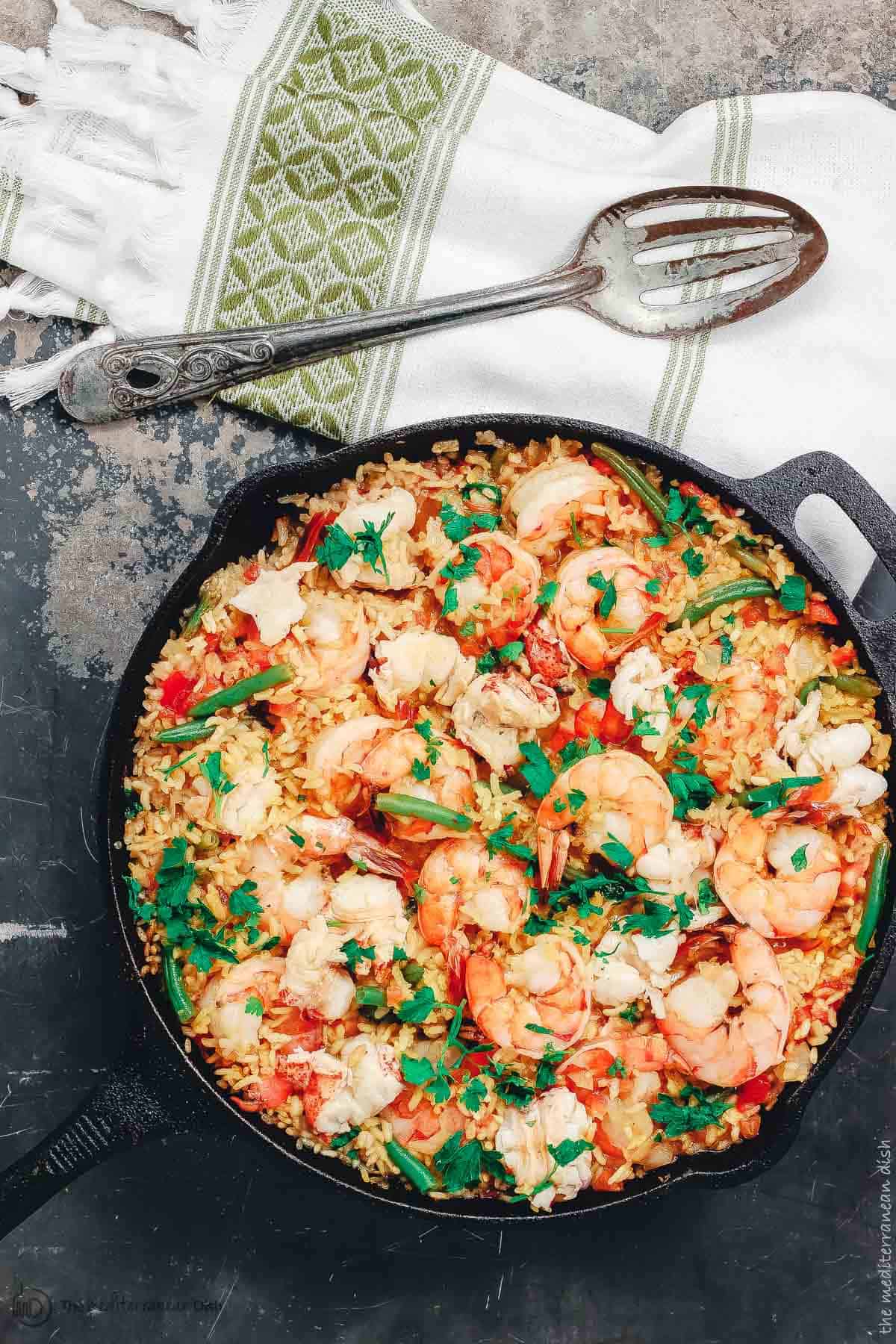
Bundle And Save
Stock your spice drawer with the Mediterranean’s best.
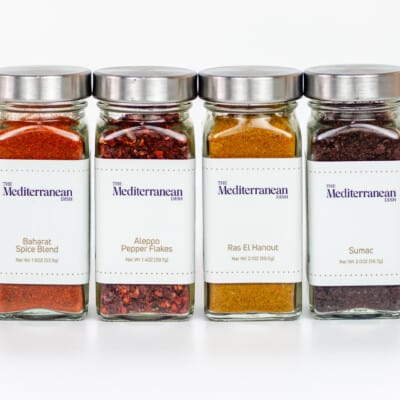
Try Saffron in These Recipes
Browse all Mediterranean recipes.
Visit Our Shop.

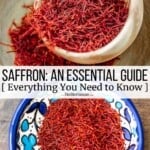
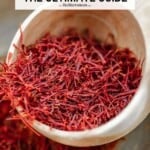

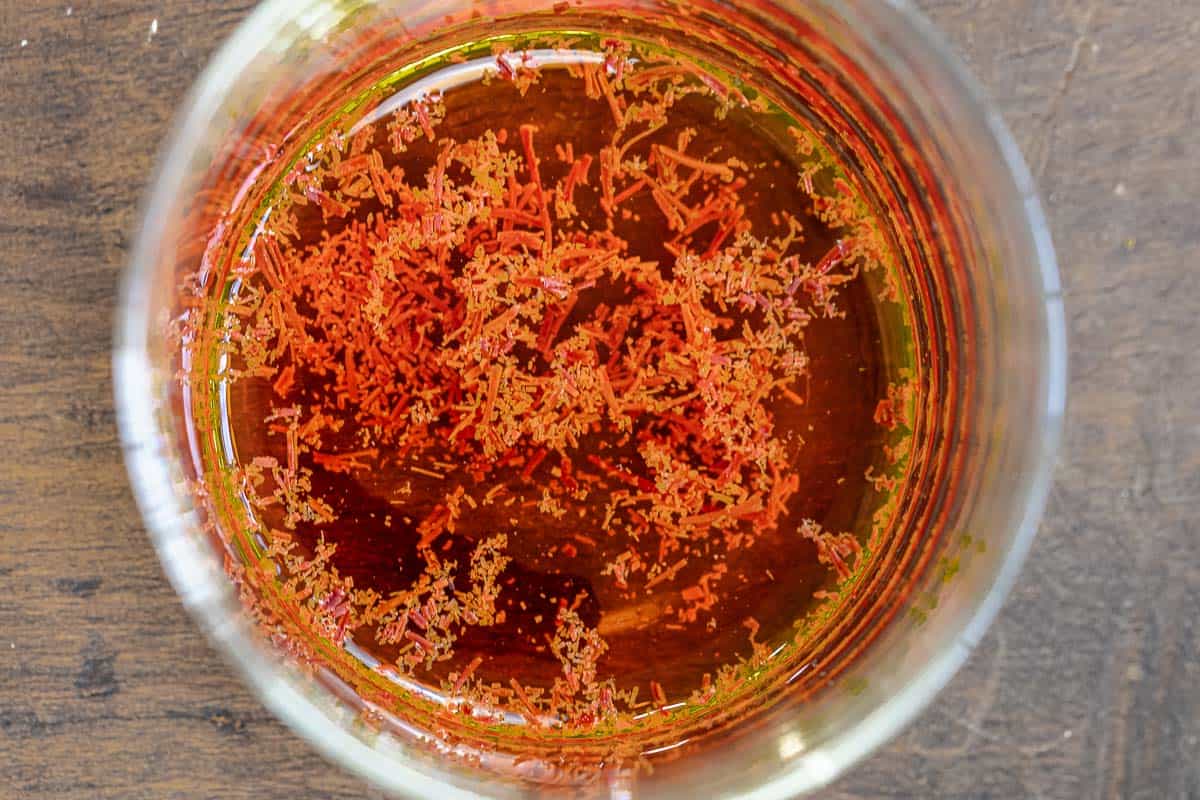

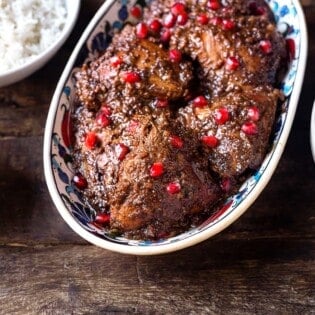


It was one of the best articles I have read about saffron. Thank you very much 😊
Wow! That means a lot, Amir. Thank you!!!
Thank you for telling us which country has good saffron. I like your recipes but could give us more vegetarian recipes as I’m on. Thankyou
Hi, Rani! I’m Summer and I work here at The Mediterranean Dish. I am not a vegetarian anymore, but I was for 15 years. I have some serious favorites on the site. I love this recipe for Whole Roasted Cauliflower. and this Balela salad is on the weekly rotation for me. It makes a ton so I eat it all week long for lunch, but it’s also good for a backyard barbecue and if you’re in the mood for supe this two — Lablabi and Stracciatella top the list as both easy and comforting. Here’s a whole list of vegetarian recipes for kitchen inspiration! Enjoy!
Is saffron tea ok for someone with High Blood pressure, cholesterol and gallbladder issues ? What quantity do I use for a smooth tea drink ? Thanks
Hi, Sandy — I would work with a functional medical doctor to address your specific health concerns and how herbs and spices can support you. Saffron is used medicinally and if you plan to consume it with that in mind a medical person is probably your best bet to help guide you. Good luck
I recently purchased Spanish saffron strands as something new to try. SO glad you wrote this! Very helpful and informative, especially knowing how to “bloom” the spice.
So glad you found it helpful, Dani!